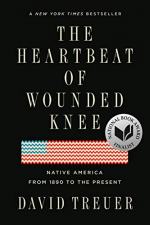|
This section contains 335 words (approx. 1 page at 400 words per page) |

|
Summary
Treuer begins the epilogue with another reframing. Just as the book reframes the story told by Dee Brown in Bury My Heart at Wounded Knee from one of destitution to one of adaptation and survival, Treuer now reframes the story originally told by John Neihardt in his biography of the Lakota visionary Black Elk. The remarkable religious visions and the epic battles, including at Little Bighorn and Wounded Knee, which comprise Black Elk’s heroism may seem to fade later in his life when he converts to Catholicism. Some Indians “consider his conversion as a kind of surrender, a confirmation that the old ways were in fact dead,” Treuer says (450). We have by now become accustomed enough to Treuer’s reframing to believe he would agree with such an assessment. “Black Elk was determined to live and to adapt,” Truer says. “That doesn’t...
(read more from the Epilogue Summary)
|
This section contains 335 words (approx. 1 page at 400 words per page) |

|




